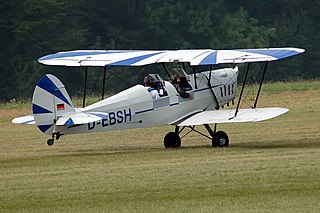
Stampe et Vertongen was a Belgian aircraft manufacturer formed in 1922 and based at Antwerp. The company specialised in design and construction of primary trainers/tourers and advanced trainers. One of their products - the Stampe-Vertongen SV.4 - has become known in certain countries as just Stampe.
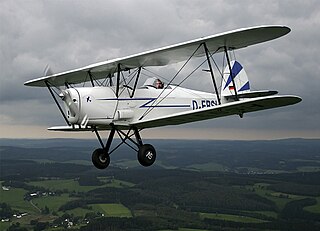
The Stampe et Vertongen SV.4 is a Belgian two-seat trainer/tourer biplane designed and built by Stampe et Vertongen. The aircraft was also built under licence in France and French Algeria.
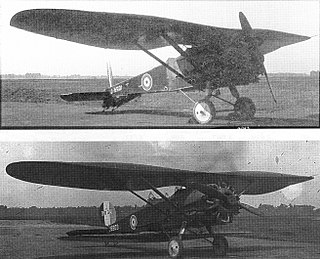
The Bristol Bullfinch was an experimental British military aircraft first flown in 1922. Variants were built as both parasol wing monoplanes and biplanes, but both versions proved unsuccessful, and only the three prototypes were built.

The Farman F.500 Monitor was a 1950s Franco-Belgian two-seat training aircraft.

The DFW Mars was an early German military utility aircraft built in 1913 and was the first original design manufactured by DFW. The aircraft was produced in both monoplane and biplane versions, which shared a common fuselage and empennage. The monoplane version featured wings that were wire-braced to a kingpost on the forward fuselage, and was powered by a 71 kW (90 hp) NAG engine. Examples of the monoplane built as dedicated trainer aircraft also incorporated a reinforcing truss beneath the wings. The biplane had conventional three-bay wings of unequal span and was powered by a 75 kW (100 hp) Mercedes engine. The wings of both the monoplane and biplane versions featured prominent sweepback.
The Renard Epervier was a Belgian prototype single-seat all-metal fighter monoplane designed by Alfred Renard at the Societé Anonyme Avions et Moteurs Renard for a government-sponsored design contest in 1928. The Epervier Type 2 was built and flown in 1928, by Belgian aircraft manufacturer Stampe et Vertongen. It carried an armament of two synchronised 7.7mm guns and was lost in September 1928 after failing to recover from a flat spin. A second prototype, the Epervier Type 2bis, introduced revised streamlined fairings for the cantilever mainwheel legs, mainwheel spats and cylinder aft-fairings and was built by SABCA.
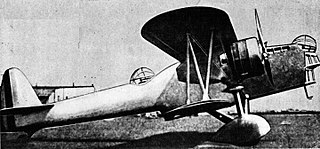
The LACAB GR.8 Doryphore was a prototype Belgian multi-role combat aircraft of the 1930s. A twin-engined biplane, it was intended to carry out bombing and reconnaissance missions, as well as act as an escort fighter. It was already obsolete when completed and no more were built.

The Renard R.35 was a prototype pressurised airliner of the 1930s built by the Belgian aircraft manufacturer Constructions Aéronautiques G. Renard. A three-engined low-winged monoplane with retractable undercarriage, the R.35 was destroyed in a crash on its first flight.
Alfred Renard was a Belgian aviation pioneer.
The Junkers T 23 was a two-seat, single-engined experimental training aircraft, built in Germany in the early 1920s. It could be configured either as a parasol winged monoplane or as a biplane to compare handling characteristics. 4 were constructed.

The Stampe et Vertongen RSV.26/140, RSV.26/180, and RSV.26 Lynx were a family of training biplanes designed by Alfred Renard and built by Stampe et Vertongen in Belgium in the 1920s. They were produced as a response to a requirement by the Belgian Air Force, which became their biggest user, although private owners also bought a small number.
The Stampe et Vertongen RSV.22 was a training biplane produced in Belgium in the 1920s.
The Stampe et Vertongen RSV.28/180 Type III, also known as the RSV.28-PSV was a military trainer aircraft built in Belgium to teach instrument-flying techniques. It was a response to a 1929 order from the Belgian Air Force, whose instrument-flying certification required a flight around a 100-kilometre (62 mi) triangular course and return to a point less than 5 kilometres (3.1 mi) from the start, using instruments only.
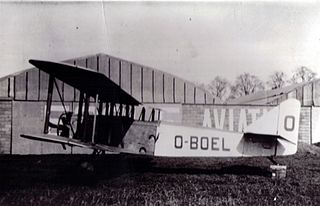
The Stampe et Vertongen RSV.32 was a trainer aircraft produced in Belgium in the early 1920s. Designed originally for the Stampe et Vertongen flying school, the Belgian Air Force became a major operator of the type, where it became the first aircraft of entirely Belgian design and manufacture to enter service. Many others were purchased by flying clubs and private owners. No RSV.32 was in existence by the end of World War II.

The Stampe et Vertongen SV.5 Tornado was a military trainer aircraft designed and built in Belgium in the 1930s. It saw service with the Belgian Air Force and Latvian Air Force, and Latvian firm VEF purchased a production license, although it is uncertain whether it built any examples.
The Caudron C.220 was a two-seat French biplane trainer. Only two were built, using different engines.

The Caudron Type O was a French single seat air racing biplane first flown in 1914.

The Caudron Types M and N were small, fast French sports monoplanes, flown 1911–13 under a wide range of engine powers. There was also a military version.
The Simplex Red Arrow was a US single-engined monoplane produced in the late 1920s and early 1930s and intended as club machine or mail transport. Most used radial engines in the 90–110 hp (67–82 kW) range. They carried one or two passengers whose seats could be open or enclosed. One variant, the Red Arrow Dual Plane, was easily converted from monoplane to biplane and was available with two versions of the much more powerful Wright Whirlwind engines. In all about 20 were built.













